Technique Safe

Is strength training safe for beginners ?
Strength training is a form of exercise that can provide numerous benefits, including increased muscle mass and strength, improved bone density, better body composition, reduced risk of injury, and enhanced athletic performance. However, it is essential to take safety measures to prevent injuries from improper technique or overexertion. Before starting any new exercise program, consult with a healthcare professional to ensure that you are healthy enough to participate. Start slowly and gradually increase intensity, focus on proper technique, warm up and cool down properly, and listen to your body. By following these tips, beginners can safely start strength training and enjoy its many benefits while minimizing the risk of injury.
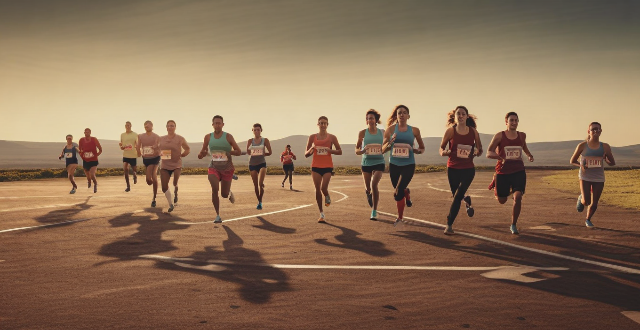
What is the proper breathing technique while running ?
Proper breathing technique is crucial for runners to improve performance, reduce fatigue, and prevent injuries. Diaphragmatic breathing involves taking deep breaths using the diaphragm muscle for efficient oxygen exchange. Rhythmic breathing matches breathing rhythm to stride pattern, promoting even and consistent breathing. Nasal breathing warms and humidifies air, but mouth breathing can be used when necessary. Relaxation and good posture are also important for optimal breathing mechanics. Incorporating these techniques into your running routine can enhance your overall running experience.

How do I learn to swim ?
Learning to swim requires patience, practice, and perseverance. Here are some tips to help you get started: 1. Find a suitable location: Look for a pool or body of water that is safe and accessible. 2. Get the right gear: Invest in a good quality swimsuit, goggles, and swim cap. 3. Start with basic techniques: Begin by learning basic techniques such as floating, kicking, and breathing. 4. Take lessons: Consider taking lessons from a qualified instructor who can teach you proper techniques and provide feedback on your progress. 5. Practice regularly: Consistency is key when learning any new skill, including swimming. Set aside regular time each week to practice your swimming skills. 6. Stay safe: Always prioritize safety when swimming. Never swim alone, and always follow pool rules and regulations.
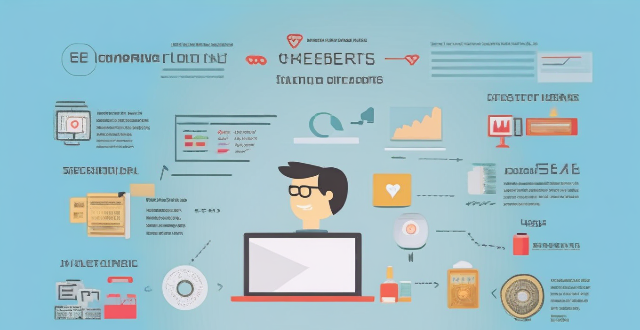
What is the Pomodoro Technique and does it really work for enhancing focus ?
The Pomodoro Technique is a time management method designed to improve focus and productivity. It involves working for 25 minutes followed by a short break, with longer breaks after every four Pomodoros. The technique aims to enhance concentration, manage time effectively, reduce procrastination, and boost overall productivity. However, its effectiveness can vary based on individual adaptability and workflow.

How dangerous is BMX biking compared to other extreme sports ?
BMX biking is an extreme sport that involves riding a bicycle on various terrains and performing stunts. While it can be thrilling and exciting, it also comes with certain risks such as head injuries, broken bones and fractures, and road accidents. Compared to other extreme sports like base jumping, rock climbing, and skydiving, BMX biking has its own unique set of dangers. To stay safe while enjoying the sport, it's important to wear proper safety gear, learn proper technique, choose safe locations, stay alert, and maintain your bike.

How does PPE contribute to creating a safe work environment ?
PPE's Role in Creating a Safe Work Environment Personal Protective Equipment (PPE) is vital for establishing a safe work environment by providing a physical barrier between workers and potential hazards, reducing the risk of injuries and illnesses. PPE contributes to safety in various ways, including preventing direct contact with hazardous substances, reducing exposure to harmful agents, providing physical support and protection, enhancing visibility and awareness, promoting compliance with regulations, encouraging responsible behavior, and contributing to ergonomic well-being. By implementing and maintaining the use of PPE, employers can significantly reduce the number of work-related injuries and illnesses, creating a safer and more secure work environment for all employees.
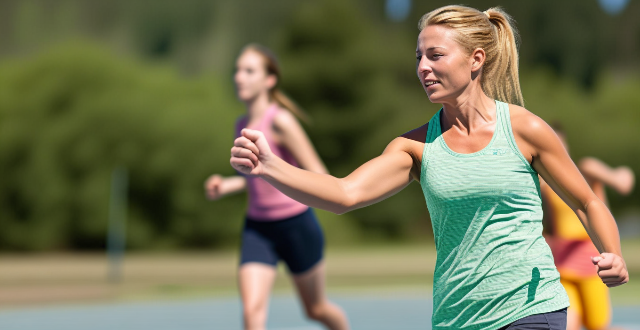
How can sports education help prevent injuries and promote safe exercise habits ?
Sports education is crucial for preventing injuries and promoting safe exercise habits. It emphasizes proper warm-up and cool-down exercises, correct technique and form, safety equipment and gear, stretching and flexibility, hydration and nutrition, and rest and recovery. By providing athletes with the necessary knowledge, skills, and attitudes, sports education helps them avoid common mistakes that lead to injuries and develop healthy exercise routines.

Can you provide examples of different types of safety drills ?
Safety drills are essential exercises designed to prepare individuals and organizations for emergencies. They help ensure that everyone knows what to do in case of an unexpected event, reducing the risk of injury or loss of life. Here are some examples of different types of safety drills: 1. Fire Drills: Alerting occupants of the building by sounding alarms, guiding them to exit routes and assembly points, ensuring that all areas are cleared, conducting a headcount to account for all individuals. 2. Earthquake Drills: "Drop, Cover, and Hold On" procedure to protect oneself from falling objects, evacuating the building only if it is safe to do so, knowing how to turn off utilities like gas and water to prevent further damage. 3. Active Shooter Drills: Knowing the "Run, Hide, Fight" strategy, how to report an active shooter situation to authorities, safe evacuation techniques without drawing attention to oneself. 4. Chemical Spill or Hazmat Incident Drills: Proper use of personal protective equipment (PPE), safe evacuation procedures, reporting the incident to emergency services, decontamination procedures for those who may have been exposed. 5. Medical Emergency Drills: Basic Life Support (BLS) and CPR techniques, use of automated external defibrillators (AEDs), first aid kit usage and management of injuries until professional help arrives.

How can I improve my breathing technique while swimming ?
Improving your breathing technique while swimming is crucial for better performance and endurance. Understand basics, practice proper rhythm, use core muscles, work on exhalation, do dryland training, visualize success, and seek professional guidance to enhance breathing and overall swimming skills.

How do I know if my home canned foods are safe to eat ?
How do I know if my home canned foods are safe to eat? When it comes to home canned foods, safety is of utmost importance. Here are some tips on how to ensure that your canned food is safe to eat: 1. Check the expiration date: Always check the expiration date printed on the can before opening it. If it has expired, it should not be consumed. 2. Look for signs of spoilage: When you open a can of food, look for any signs of spoilage such as mold, discoloration, or off-odors. If you see any of these signs, discard the can immediately. 3. Use proper storage: Canned foods should be stored in a cool, dry place away from direct sunlight and heat sources. Make sure the lid is tightly closed and secure to prevent air from entering the can. 4. Follow proper canning techniques: If you are new to canning, it is important to follow proper canning techniques to ensure safety. This includes using sterile jars and lids, heating the food to at least 180°F (82°C), and allowing the food to cool completely before storing it in the refrigerator or pantry. 5. Read labels carefully: Labels on canned foods provide important information about ingredients, nutritional content, and storage instructions. Make sure to read them carefully before consuming the food. By following these tips, you can ensure that your home canned foods are safe to eat. Remember that even if you follow all of these guidelines, accidents happen sometimes; therefore, always be aware of potential hazards and take appropriate precautions when handling food.
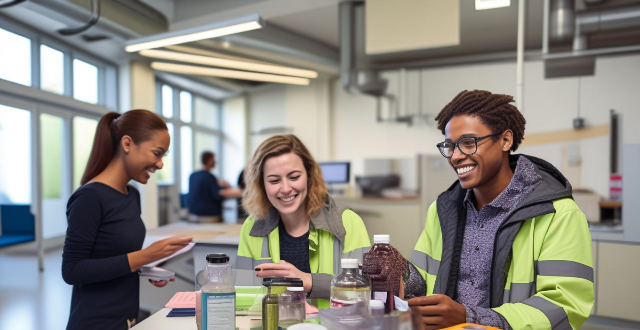
How can individuals contribute to the safe management of hazardous chemicals in their community ?
The article outlines various ways individuals can contribute to the safe management of hazardous chemicals in their community. It emphasizes the importance of education, staying informed, taking action, prevention and preparedness, and community collaboration. Individuals are encouraged to research common hazardous chemicals, identify potential health effects, monitor local news, attend public meetings, report leaks and spills, support strict regulations, participate in cleanup efforts, implement safe practices at home, create an emergency plan, build partnerships, and encourage transparency. By taking these steps, individuals can play a crucial role in ensuring the safe management of hazardous chemicals within their communities.

What are the key factors in designing a safe and stable building structure ?
The text provides a comprehensive overview of the key factors that must be considered when designing a safe and stable building structure. It emphasizes the importance of site selection and analysis, foundation design, structural system selection, material selection, and construction quality control in ensuring the well-being of inhabitants and protecting against natural disasters. The text also highlights the need for proper workmanship, inspections, testing, and maintenance to maintain the integrity of the structure over time. Overall, the text serves as a valuable resource for architects, engineers, and builders involved in the design and construction of safe and stable buildings.

How does proper handwashing technique prevent the spread of germs ?
Proper handwashing is a simple yet effective way to prevent the spread of germs. It involves using soap and water to clean your hands thoroughly, especially before eating or preparing food, after using the restroom, and after being in contact with someone who is sick. The key points on how proper handwashing technique can help prevent the spread of germs include: - Wet your hands with clean, running water (warm or cold), turn off the tap, and apply soap. - Lather your hands by rubbing them together with the soap. Be sure to lather the backs of your hands, between your fingers, and under your nails. - Scrub your hands for at least 20 seconds. Need a timer? Hum the "Happy Birthday" song from beginning to end twice. - Rinse your hands well under clean, running water. - Dry your hands using a clean towel or air dry them. By following these steps, you can effectively remove dirt, viruses, and bacteria from your hands, which can help prevent the spread of germs that cause infections like the common cold and flu. Additionally, proper handwashing technique can also help prevent the spread of more serious illnesses such as COVID-19, Ebola, and norovirus.
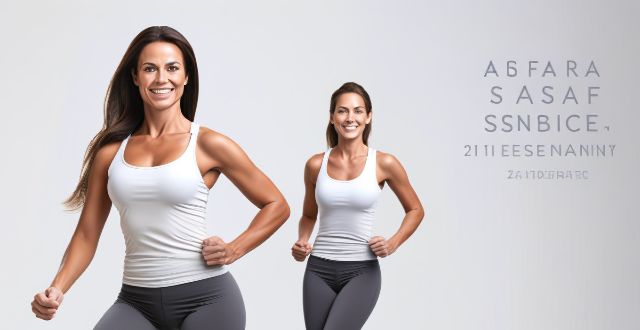
Is it safe to exercise during pregnancy and what precautions should be taken ?
Is it safe to exercise during pregnancy? Yes, as long as you follow certain precautions and guidelines, including consulting your healthcare provider, choosing appropriate exercises, listening to your body, staying hydrated, wearing comfortable clothing, using proper technique, avoiding lying flat on your back, not pushing yourself too hard, cooling down properly, and being mindful of environmental factors. Exercise can have numerous benefits for pregnant women, such as reducing the risk of gestational diabetes, improving mood, increasing energy levels, and helping with recovery after birth.

What are some tips for avoiding distractions while working on important tasks ?
To avoid distractions while working on important tasks, create a distraction-free environment by turning off your phone, closing unnecessary applications, and finding a quiet place. Set clear goals and priorities, use time management techniques like the Pomodoro Technique, minimize interruptions by informing others about your schedule, stay organized with tools like calendars and planners, and take care of yourself by getting enough sleep and taking regular breaks.
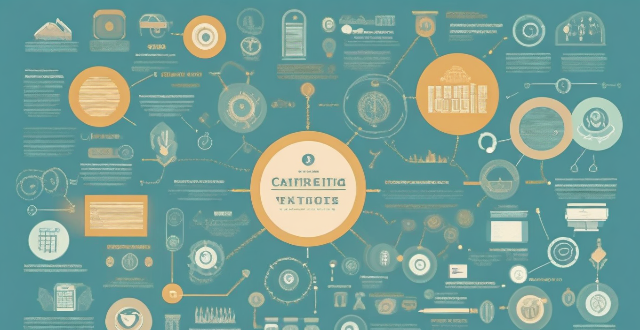
What are some common tools and techniques used in risk management ?
Risk management is a process that involves identifying, assessing, and prioritizing potential risks. There are various tools and techniques used in risk management, including brainstorming, Delphi method, checklists, qualitative and quantitative assessment, risk matrix, cost-benefit analysis, avoidance, reduction, transference, acceptance, continuous monitoring, and audits. These tools and techniques help organizations and individuals manage risks effectively and make informed decisions.
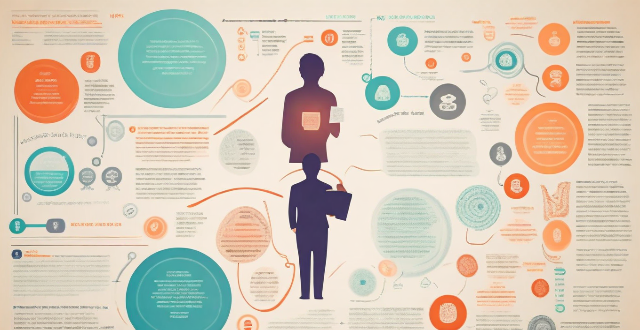
What are the key self-assessment techniques for personal growth ?
Self-assessment techniques help identify strengths, weaknesses, and areas for improvement. Key methods include reflecting on past experiences, setting goals and tracking progress, seeking feedback from others, keeping a journal or diary, and practicing mindfulness and self-awareness. These techniques provide different perspectives and help individuals understand their personal growth over time.

What are some common mistakes people make when learning to swim ?
When learning to swim, common mistakes include forgetting to breathe properly, tensing up too much, not using proper technique, and overestimating abilities. To avoid these mistakes, focus on deep breathing exercises, relaxing your body, seeking guidance from a qualified instructor, and staying within your comfort zone. With patience, practice, and proper technique, beginners can improve their skills and enjoy a safer and more enjoyable swimming experience.
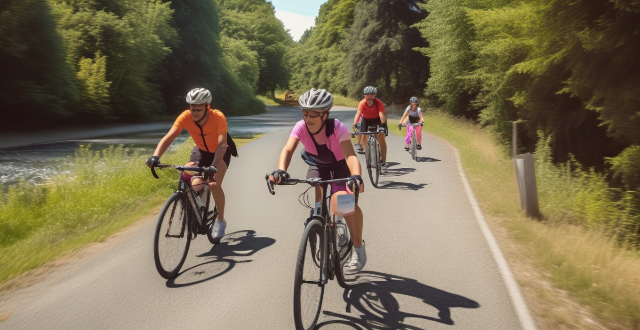
How do I find cycling routes that avoid traffic ?
Cycling is a great way to exercise and explore, but sharing the road with vehicles can be dangerous. To ensure a safe ride, it's important to find cycling routes that avoid traffic. Some tips include using online mapping tools like Google Maps or Strava, checking with local cycling groups, looking for dedicated bike infrastructure, and planning your route ahead of time. By following these steps, you can enjoy a safe and enjoyable ride without worrying about traffic.

What are some popular celebrity makeup techniques ?
Makeup techniques used by celebrities often set trends and become popular among the general population. Here are some of the most popular celebrity makeup techniques: 1. Contouring involves using makeup to create shadows and highlights on the face, which can help define features and enhance facial structure. This technique is often used by celebrities to achieve a more chiseled look. 2. Baking is a makeup setting technique where you apply a thick layer of translucent powder under the eyes and on high points of the face, let it sit for 5-10 minutes, and then brush it off. This technique helps to set the foundation and concealer, making them last longer. 3. Celebrities often opt for glossy lips to add a pop of color and make their lips appear fuller. This trend has been popularized by stars like Kylie Jenner and Rihanna. 4. Full, bold eyebrows have been in style for several years now, thanks to celebrities like Cara Delevingne and Lily Collins who have sported natural-looking, full brows. 5. Achieving a dewy, glowing complexion is another popular celebrity makeup technique. Stars like JLo and Kim Kardashian are known for their radiant skin. 6. Graphic eyeliner is a bold look that involves creating sharp, defined lines on the eyes. Celebrities like Bella Hadid and Kendall Jenner have made this trend popular.

What are the best ways for women to avoid dangerous situations while on a trip ?
The article provides a comprehensive guide for women to stay safe while traveling. It emphasizes the importance of researching the destination, staying connected, trusting instincts, keeping belongings safe, being aware of surroundings, traveling with friends or joining groups, and learning self-defense techniques. Each section offers key points that highlight specific actions women can take to ensure their safety during their travels.

What are the basic techniques used in Chinese cooking ?
Chinese cuisine is known for its diverse flavors and cooking techniques. Here are some of the basic techniques used in Chinese cooking: 1. Stir-frying involves quickly frying small pieces of food in a wok or frying pan over high heat. The key to successful stir-frying is to use hot oil, fresh ingredients, and constant motion to prevent burning. 2. Steaming involves placing food in a steamer basket over boiling water and allowing it to cook through steam. This method is often used for dumplings, buns, fish, and vegetables. 3. Braising is a slow-cooking method that involves simmering meat or vegetables in liquid until they become tender and flavorful. This technique is often used for stews, soups, and braises. 4. Deep-frying involves submerging food in hot oil until it becomes crispy and golden brown. This technique is often used for fried rice, spring rolls, and tempura dishes. 5. Roasting involves cooking food in an oven at high temperatures until it becomes caramelized and tender. This technique is often used for roasted meats, vegetables, and baked goods like mooncakes and egg tarts.
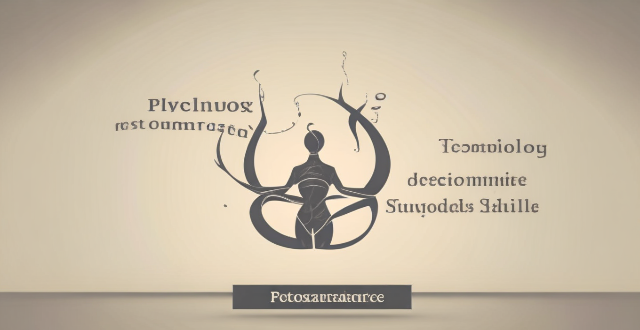
Can sports psychology techniques be applied to non-athletes for general well-being ?
Sports psychology techniques can improve non-athletes' well-being by setting goals, visualizing success, using positive self-talk, practicing mindfulness, and relaxation techniques.

What are some creative composition techniques for iPhone photography ?
Creative composition techniques for iPhone photography include the rule of thirds, leading lines, symmetry and patterns, frame within a frame, filling the frame, rule of odds, negative space, motion blur, playing with perspective, and using color and contrast. These techniques help create more balanced and interesting photos, draw attention to the subject, and add visual interest. By incorporating these techniques into iPhone photography, stunning images can be captured that stand out from the crowd.

What wildlife should I be aware of when planning an outdoor adventure ?
When planning an outdoor adventure, it's important to be aware of the wildlife that you may encounter. This will help you stay safe and also ensure that you don't disturb the natural habitats of these creatures. Here are some common types of wildlife to be aware of: - Bears, deer, wolves, and coyotes are some of the mammals you may encounter. They can become aggressive if they feel threatened or if they are hungry. It's important to keep a safe distance from them and never approach them. - Snakes and alligators/crocodiles are some of the reptiles you may encounter. Some species of snakes are venomous and can be dangerous if provoked or accidentally stepped on. Alligators and crocodiles should be avoided at all times, especially when swimming or near water sources. - Eagles/hawks and geese/ducks are some of the birds you may encounter. They can become aggressive if they feel threatened or if their nests are being disturbed. It's important to keep a safe distance from these birds and never approach them. - Ticks and mosquitoes are some of the insects you may encounter. They can carry diseases such as Lyme disease and West Nile virus, so it's important to use insect repellent when spending time outdoors.

Are there any breathing techniques that can help reduce stress ?
Breathing techniques are a simple yet powerful tool for reducing stress levels and promoting relaxation. By practicing these techniques regularly, you can improve your overall well-being and reduce the negative effects of stress on your body and mind. Some effective breathing techniques for stress reduction include deep breathing, diaphragmatic breathing, alternate nostril breathing, and box breathing. These techniques help to increase oxygen flow to the brain, relax the body, balance the left and right hemispheres of the brain, and slow down the heart rate. Remember to focus on your breath and try to clear your mind of any distractions while practicing these techniques.

What are some effective techniques for improving concentration and focus ?
Concentration and focus are crucial skills for achieving goals, whether it's studying, working, or enjoying a hobby. Here are some effective techniques to improve them: minimize distractions by turning off notifications and finding a quiet place; take short breaks every hour or use the Pomodoro technique; practice mindfulness through meditation and deep breathing; set clear goals and prioritize tasks; eliminate multitasking and focus on one task at a time; get enough sleep and create a relaxing bedtime routine; exercise regularly to enhance cognitive function; stay hydrated to avoid fatigue; use visual cues like charts and diagrams; and limit caffeine intake to avoid jittery feelings.

Is it possible to read a book in one day using speed reading techniques ?
Speed reading is a technique that allows you to read faster than your normal reading speed. While it can be helpful for quickly reviewing material or getting an overview of a topic, it may not be suitable for all types of books. The pros and cons of speed reading are discussed, as well as tips for effectively using this technique. Ultimately, the decision to use speed reading should be based on personal preferences and goals, as well as the type of book being read.